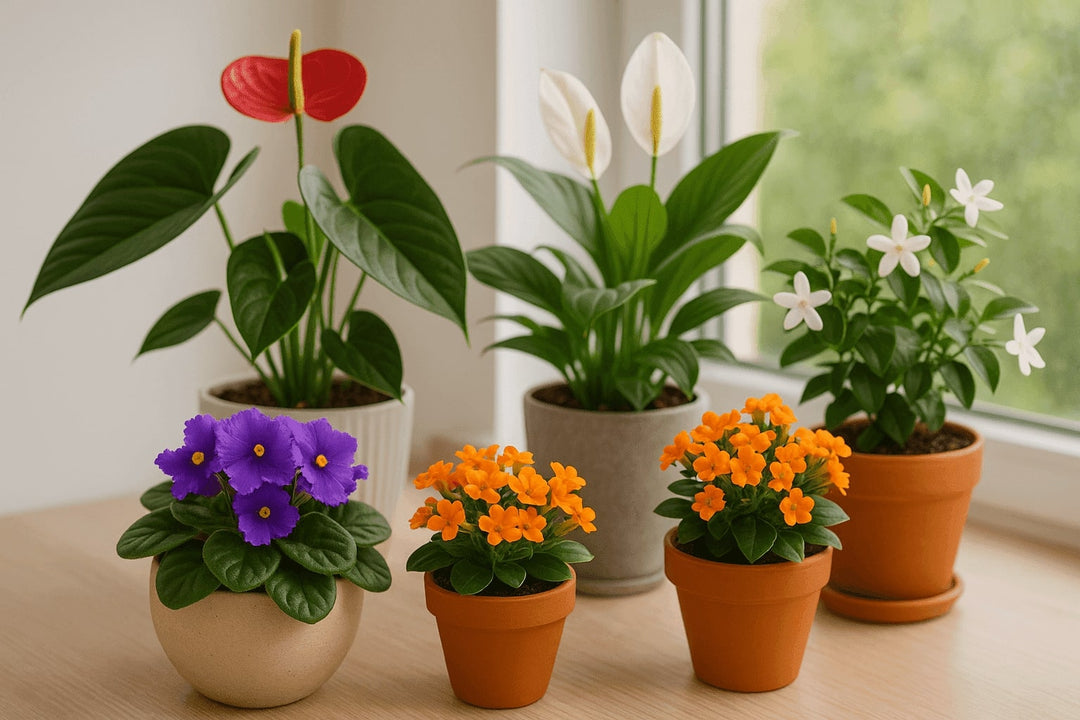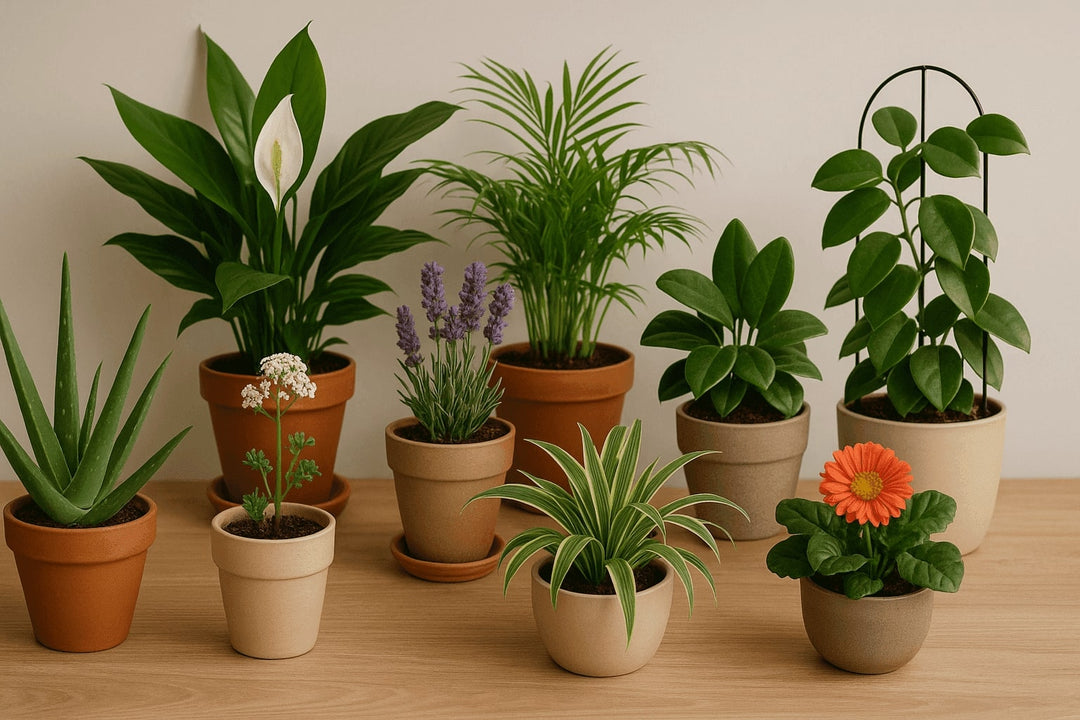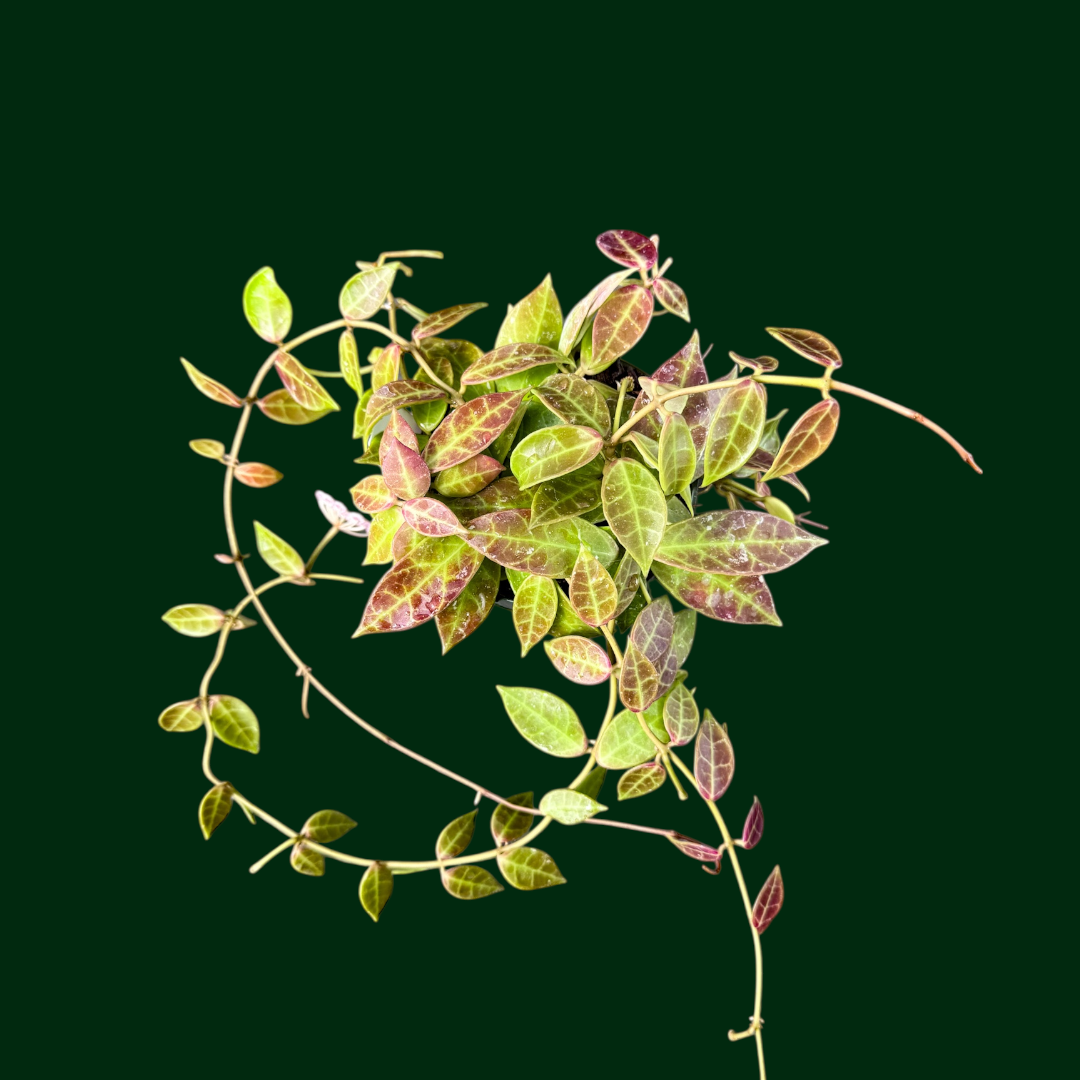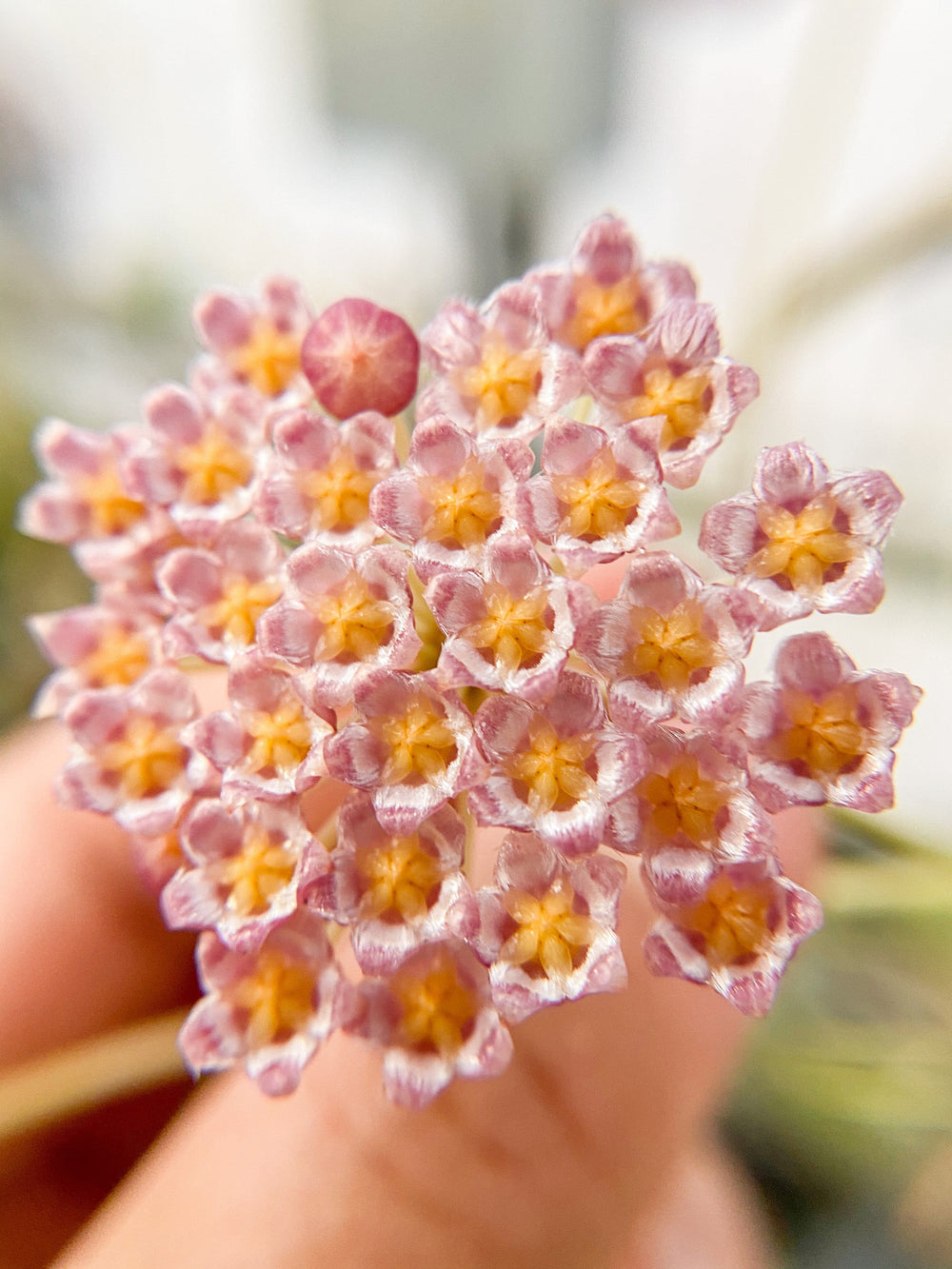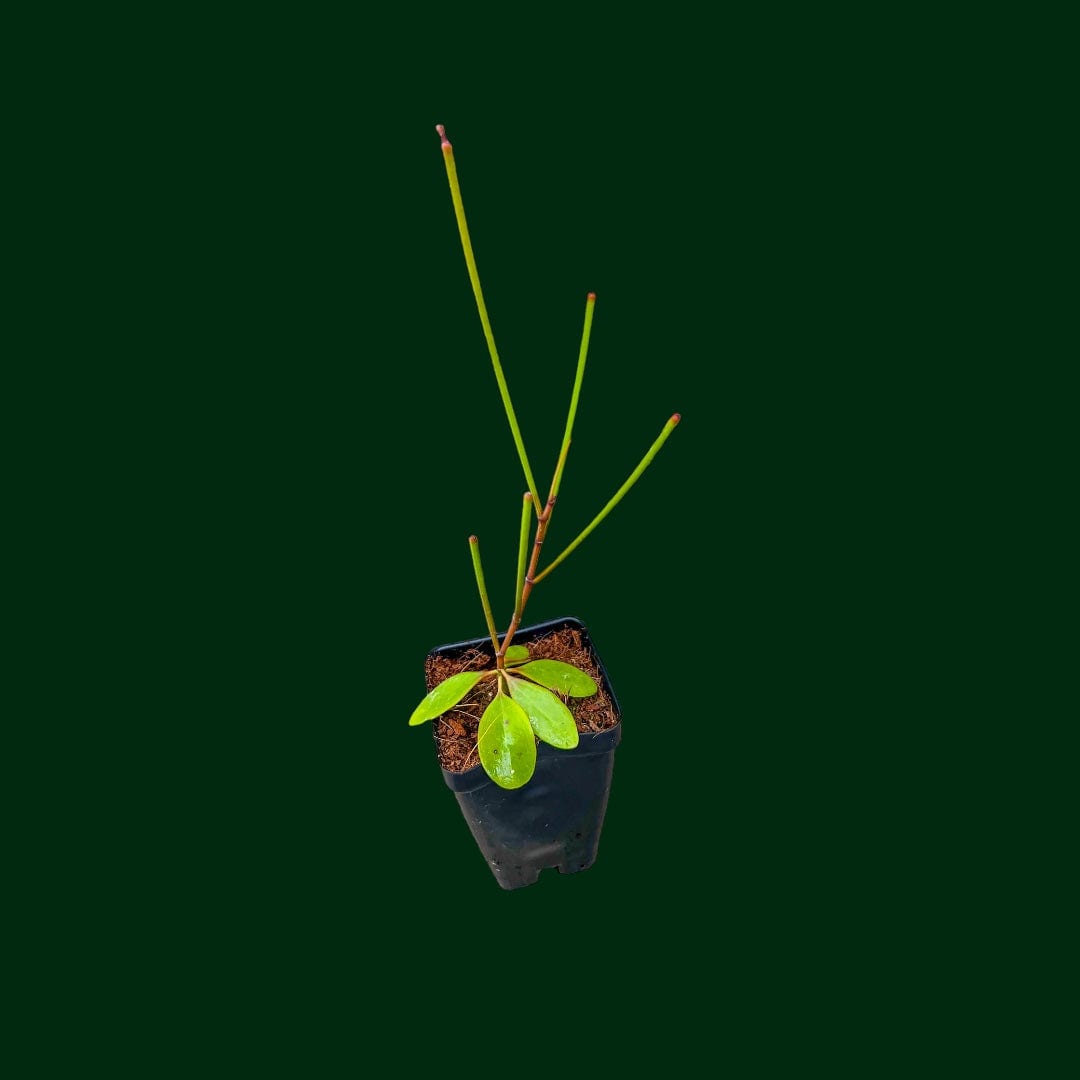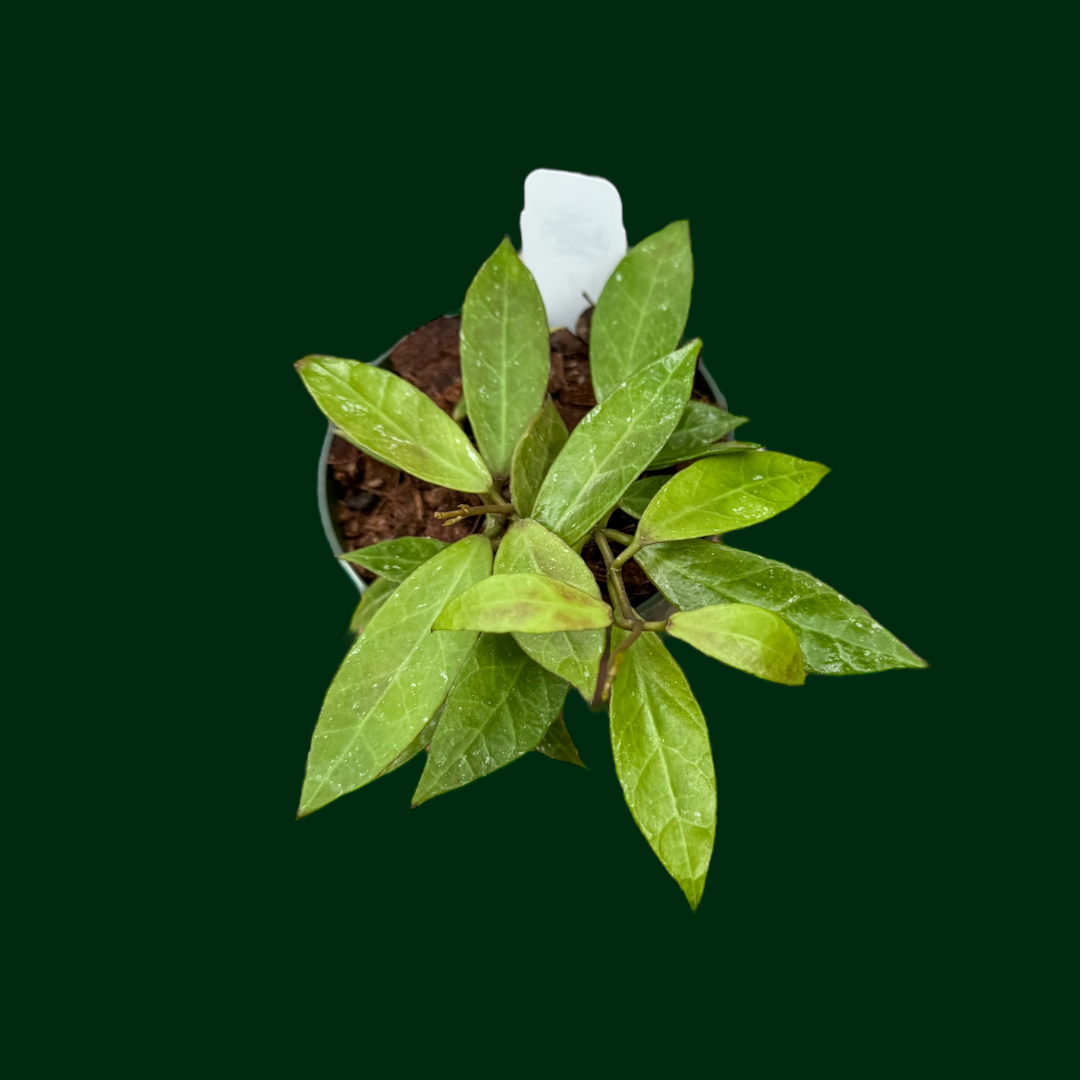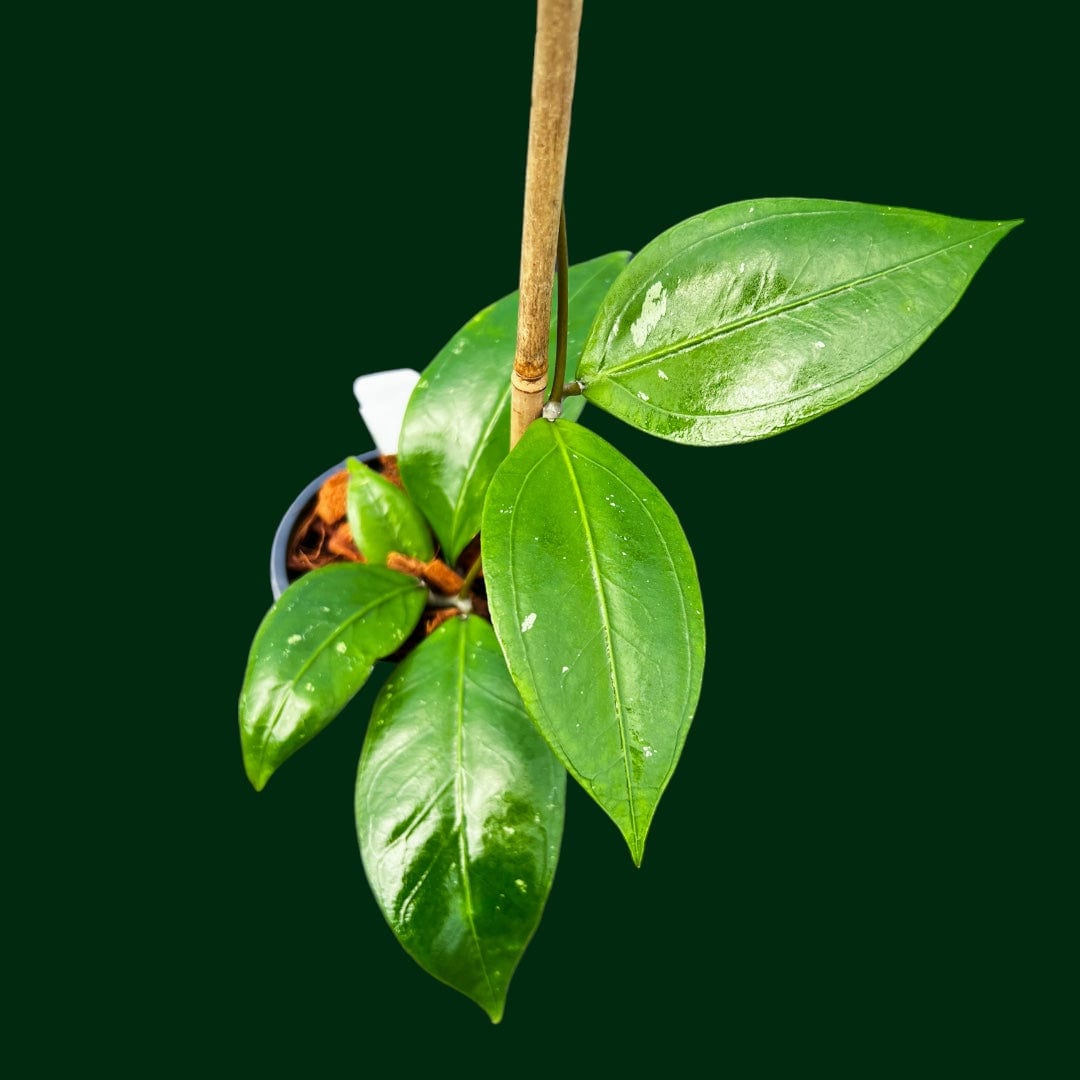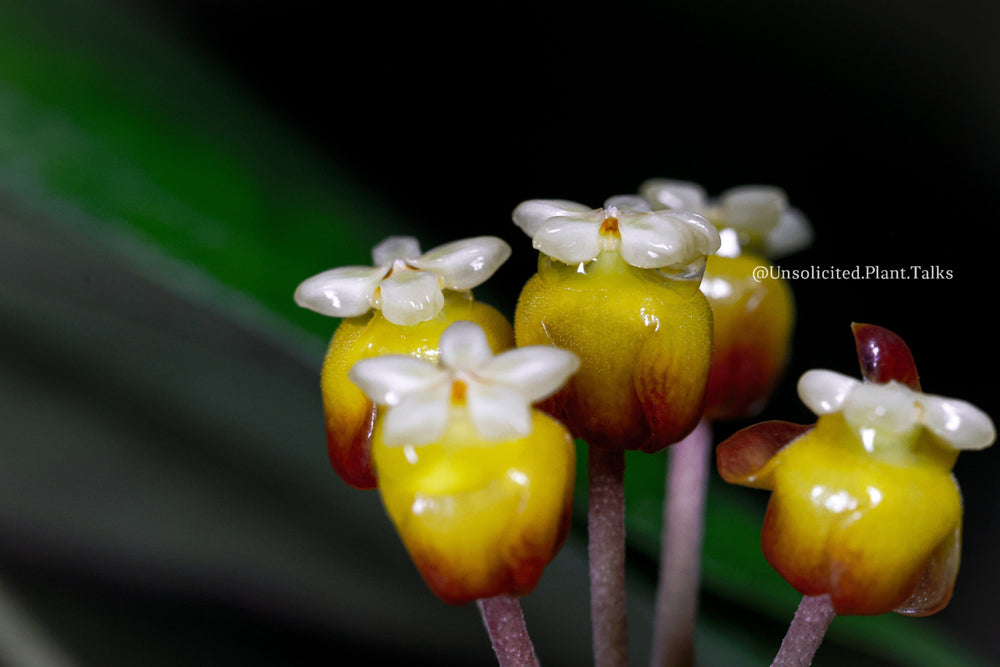How to Get a Hoya Plant to Bloom: Expert Wax Plant Care Tips
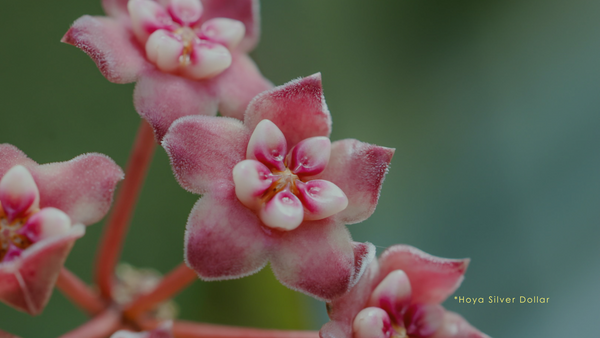
Table of Contents
- 1. Get a Hoya Plant to Bloom by Providing Enough Light
- 2. Water Wax Plants With Care: Overwatering Might Prevent Flowers
- 3. Encourage Root Health with Proper Drainage
- 4. Provide Your Hoyas with the Right Nutrition
- 5. Your Hoya Might Just Need Time
- 6. Don't Over Prune Your Hoya
- Conclusion
Hoya blooming season is finally here, and it's the perfect time to unlock their diverse beauty!
Known for their wide variety of colors, unique appearances, and enchanting scents, hoyas produce beautiful umbels of flowers that remain a popular choice for plant enthusiasts and collectors. In this comprehensive guide, we'll share expert tips on how to get a hoya plant to bloom, allowing you to enjoy the magnificent display of hoya flowers in your home.
Here's a breakdown of the key factors that influence flowering:
- Light: Hoyas generally prefer bright, indirect light. Some species can tolerate lower light conditions, while others require more direct sunlight.
- Water: Hoyas are drought-tolerant and dislike excessive moisture. Slight water stress can encourage blooming.
- Drainage: Well-draining soil is crucial to prevent root rot and promote healthy root development.
- Nutrition: Adequate nutrition is essential for blooming. Fertilizing during the active growing season can be beneficial.
- Time: Hoyas often need time to mature before they start flowering. Patience is key.
- Pruning: Over-pruning can remove potential flowering sites. It's important to prune selectively and avoid excessive cuts.
Let's get to more details...
1. Get a Hoya Plant to Bloom by Providing Enough Light

One of the primary factors influencing hoya flowering is the amount of light they receive. Different hoya species have varying light requirements, so it's essential to understand your specific hoya's needs. In general, hoyas prefer growing conditions with bright, indirect light to encourage blooming. Many hoyas can tolerate low light well, but they may not bloom as profusely. It's important to strike a balance and provide them with enough light to promote healthy growth and flowering.
Some hoyas, like Hoya carnosa 'Nova Ghost', can tolerate lower light conditions and even grow well as houseplants. They can be placed in areas with medium to bright indirect light, such as near a north or east-facing window. However, they may struggle to produce flowers in lower light.
On the other hand, some hoyas, like Hoya walliniana, prefer brighter light conditions. They may require more direct sunlight, provided it's not intense or during the hottest parts of the day. These hoyas can handle a few hours of direct morning or late afternoon sun.
It's important to observe your hoya's response to the light conditions and make adjustments accordingly. If the leaves are turning yellow or brown, it might be a sign that the plant is receiving too much direct sunlight. If the plant is spindly and not blooming, it might indicate insufficient light.
If you want to encourage blooming, avoid placing hoya plants in low light areas or areas with long periods of intense, direct sunlight. Give your plant a place in front of a window with filtered light or provide supplemental grow lights to create the ideal lighting conditions for robust flowering.
2. Water Wax Plants With Care: Overwatering Might Prevent Flowers

Hoyas are renowned for their drought-tolerant nature and dislike excessive moisture in their roots, though most enjoy at least some humidity. Hoyas are also known by their common name of "wax plants" because of their ability to tolerate drought conditions using their waxy, succulent-like leaves and thick roots that store water. This allows them to withstand long periods without rainfall.
In their natural habitats, Hoyas often grow as epiphytes, attaching themselves to trees or rocks. This lifestyle has allowed them to adapt to environments with limited water availability, and is why we call them the succulents of the tropical plant world.
Overall, if you are considering growing a Hoya, it is essential to water with care, and provide a well-draining medium to mimic their preferred conditions. This will help them thrive and prevent any issues associated with excessive moisture. Overwatering can lead to root rot and hinder blooming.
Even without excessive watering, your hoya might not feel like flowering. To encourage your hoya to flower, try withholding water for a week or two, or until you notice the leaves slightly puckering. Once you observe these signs, give your hoya a good drink. This slight water stress can signal the plant to shift its energy towards flowering.
3. Encourage Root Health with Proper Drainage

As mentioned above, hoyas need healthy roots to thrive and flower. To ensure optimal root health, it's essential to provide them with well-draining soil. The roots of hoya plants play a vital role in absorbing water and nutrients from the soil, which is crucial for their overall growth and blooming.
One of the critical factors in promoting healthy roots is providing them with well-draining soil. Hoyas prefer a substrate that allows excess water to drain away easily, preventing waterlogged conditions that can lead to root rot. To achieve this, it's recommended to use a well-draining potting mix specifically formulated for succulents or cacti, or creating your own mixture.
Consider using a mix of coco husk and coco coir, or a combination of other chunky, well-draining materials. We use a 70/30 mix of coco husk to coco coir in our own greenhouses. This blend ensures proper drainage and aeration for the roots, preventing them from being suffocated by excessive moisture. Mixing in orchid bark or pumice can also enhance the drainage properties of the soil mix.
When choosing a pot for your hoya plant, opt for one with drainage holes to allow excess water to escape. Additionally, avoid using pots that are too small, or much larger than the root system. Too small, and you could wind up with a root bound plant. Too large, and your pot might have excessive water retention. Either condition can increase the risk of root rot, so repot if necessary.
4. Provide Your Hoyas with the Right Nutrition

Nutrition plays a vital role in hoya blooming. If your hoya is not producing flowers, it might be lacking essential nutrients. Give your hoya a small boost by using a fertilizer, especially if the plant has been in the same pot for a while, or in lower light conditions.
Some of the best fertilizing methods include using a balanced liquid fertilizer with an NPK (nitrogen, phosphorus, and potassium) ratio of 20-20-20, or a fertilizer specifically formulated for hoya plants. Dilute the fertilizer according to the instructions on the package and spray it onto the leaves and soil of the hoya plant. Alternatively, you can also add the diluted fertilizer to the water used for watering the plant.
Fertilizing hoya plants works best during their active growing season, typically in spring and summer. Its also important to reduce or stop fertilization during winter when the plant goes into dormancy. Regularly monitoring the plant's growth and adjusting the fertilization frequency and concentration accordingly is important to avoid over-fertilization and potential damage to the plant.
5. Your Hoya Might Just Need Time

Patience is key when it comes to hoya blooming. Sometimes, it simply takes time for your hoya to reach maturity and produce flowers. Younger plants often focus on establishing their root system and foliage growth before diverting energy to flowering. Remember that many hoyas are known for their slow growth. It can take several years for a hoya to mature and produce its first flowers.
By providing optimal care, creating a suitable environment, and granting the plant enough time to mature, you can increase the likelihood of your hoya flowering. Therefore, if your hoya is healthy and exhibits vigorous growth, it's just a matter of waiting for the right time. Be patient and continue providing optimal care, and you'll eventually be rewarded with splendid hoya blooms.
6. Don't Over Prune Your Hoya

When
1. Time your pruning
2. Remove only what is necessary
Avoid excessive
3. Encourage new growth
4. Be patient
Understand that hoyas may have their own blooming patterns, and some varieties may take longer to flower than others. It is normal for certain hoyas to go through a resting phase, during which they don't produce blooms. Avoid excessive
By striking the right balance between
Conclusion
Getting your wax plant to bloom requires a combination of proper hoya plant care, attention to their specific needs, and a little bit of patience. By providing the right lighting conditions, avoiding overwatering, ensuring proper drainage, offering the right nutrition, and understanding the time it takes for a hoya to mature, you can create the ideal environment you hoya plant needs to thrive and reward you with stunning flowers.
Remember, each hoya is unique, and it may require some experimentation and adjustments to find the perfect care routine. By implementing these expert tips and tailoring them to your hoya's individual requirements, you'll be well on your way to get hoya plants to bloom.
Embrace the journey of hoya care, and enjoy the breathtaking beauty that these wax plants bring to your living space. Happy blooming!



